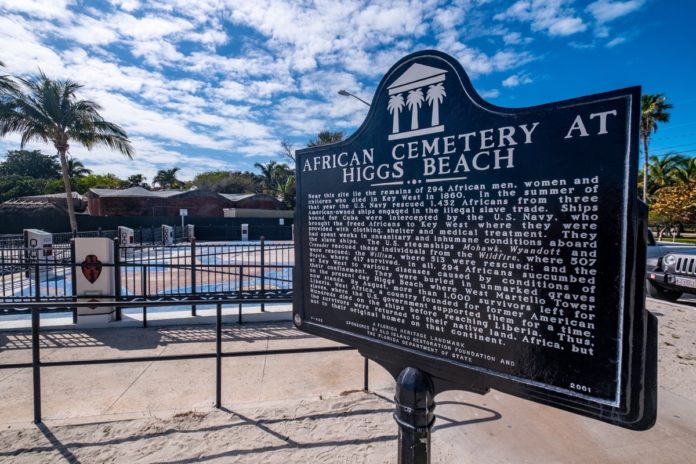President James Monroe, on March 3, 1819, signed “An Act to Protect the Commerce of the United States, and Crimes of Piracy.” The act gave the U.S. Navy the ability to establish the West Indies Squadron. The mission of this specialized force was to combat both piracy and the slave trade. Commodore James Biddle was named its first commander.
One of the ships assigned to Biddle was the schooner Alligator. The ship-of-war, built in the Boston Navy Yard and commissioned in March 1821, was armed with 12 cannons. The Alligator’s inaugural mission was not a military one but one of a humanitarian nature. The schooner escorted representatives of the American Colonizing Society to the west coast of Africa. The objective of the society, founded in 1817, was to repatriate freed slaves. The purpose of the journey was to find land on which to establish a colony. In 1847, that colony was recognized as the Republic of Liberia.
Before the Civil War, it was legal to own slaves — to buy and sell people. Decades earlier, several countries had banned the smuggling of human cargo across international waters. By 1827, the international slave trade had been illegal in Spain for seven years, the United States for 19 years, and Great Britain for 20 years. Against the law or not, the practice did not end. For instance, Spanish-held Cuba, in need of an abundant supply of plantation labor, paid little heed to the prohibition.
In 1860, the Navy apprehended three U.S.-based ships attempting to smuggle human cargo to Cuba. The ships Wildfire, William, and Bogota had more than 1,400 African refugees on board. They were given a military escort to the nearest American port of entry, Key West. In 1860, Key West had a population in the neighborhood of 3,000 people, and the sudden introduction of 1,432 refugees pushed the community beyond its limits. With nowhere to house such a large, sudden influx of people, many of whom were suffering from illness and malnutrition due to being packed into the holds of slave ships like chattel, Key West’s people worked to build housing and provide food, clothes and medical attention.
During the refugees’ nearly three months on the island, 294 died. They were buried in shallow sand graves at what, in 1860, was an undeveloped area of the island. Eighty-five days after arriving, the remaining refugees were once again boarded on to ships. After sailing out of the harbor, a course was set for Liberia where, by 1867, the American Colonizing Society had worked to repatriate 13,000 freed slaves.
In 1861, the U.S. Army Corps of Engineers surveyed an area on which to build the Civil War era fortification West Martello. The map they created was marked with X’s identifying the location of the “African Cemetery.” When construction on the fort began the following year, human remains were uncovered in shallow sand graves, moved to an empty field nearby, and largely forgotten for more than 100 years.
Based on rediscovered documents, historians and archaeologists theorized that all of the grave sites had not been covered by the red-bricked West Martello and that it was likely additional graves were beneath the sand at neighboring Higgs Beach. In 2002, the Mel Fisher Maritime Museum organized an archaeological investigation. Using ground-penetrating radar, 15 shallow grave sites were discovered buried about 2 to 3 feet under the sand and measuring 5 to 6 feet in length. They were left undisturbed, and in 2007 the African Cemetery Memorial was installed to protect and commemorate the burial site, honor those buried beneath the sand in 1860, and tell this important story.
Again using ground-penetrating radar, human remains that had been moved during construction of the West Martello site were rediscovered in shallow graves on the other side of what is today Atlantic Boulevard. The land had become a public dog park. The dog park has been relocated and plans have been made to reroute Atlantic Boulevard around the burial site to better honor the entirety of what has become of the cemetery.
As for the schooner Alligator, shortly after returning from its African mission, it left its mark on the Florida Keys. Reassigned to the West Indies, the Alligator engaged pirates off the coast of Cuba in 1822. After rescuing American merchant ships and escorting the rag-tag fleet back to America, it ran aground at a reef offshore of the Matecumbe keys. Today, that reef is known as Alligator Reef, home to the second-largest lighthouse marking the Florida Reef, Alligator Lighthouse.




















